Existing User Log In
New User Registration
Register for a free account to gain full access to the VGChartz Network and join our thriving community.



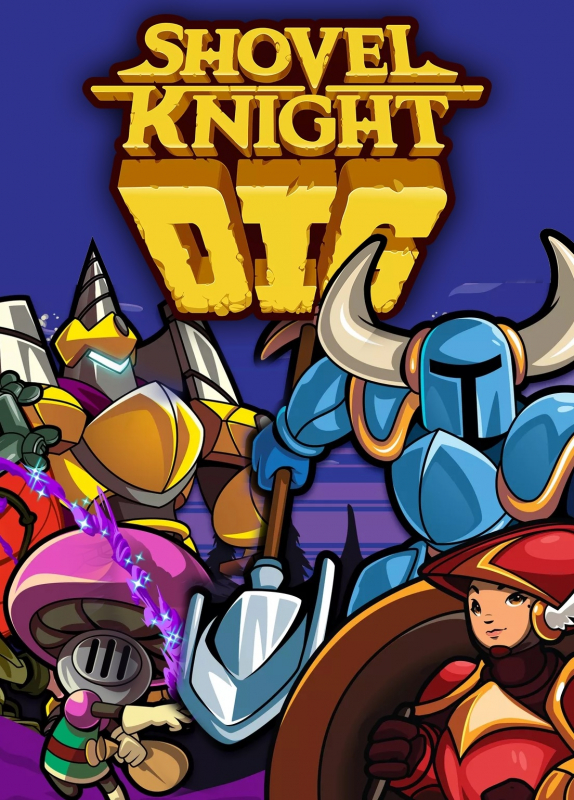

America - Front
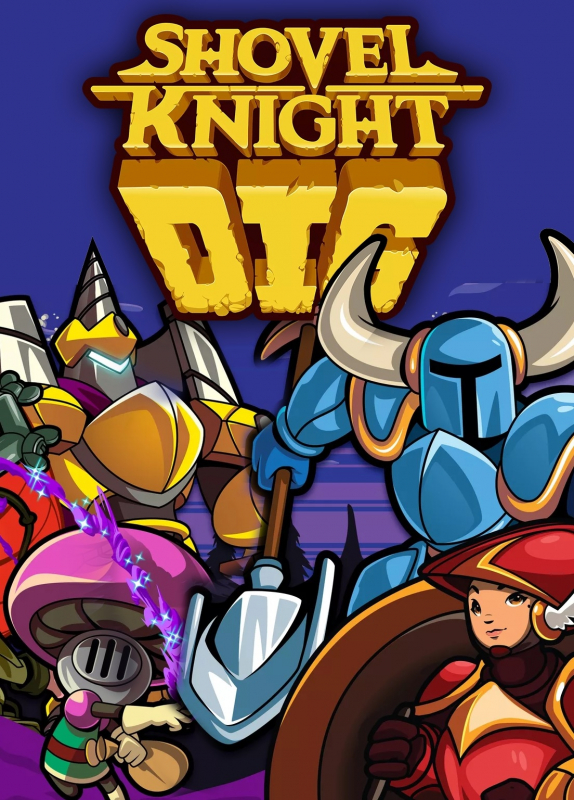

America - Back

Yacht Club Games
Platform
 (Add Date)
(Add Date) (Add Date)
(Add Date) (Add Date)
(Add Date)
| Owners: | 0 |
| Favorite: | 0 |
| Tracked: | 0 |
| Wishlist: | 0 |
| Now Playing: | 0 |
Since 2014, developer and publisher Yacht Club Games has done an extraordinary job building upon the Shovel Knight brand. What began as a great standalone side-scrolling action-platformer expanded over eight years into three quality expansions, a fighting game spin-off, a dungeon-crawling puzzler, and, most recently, a rogue-lite with a twist. This rogue-lite, Shovel Knight Dig, fits quite naturally among the other franchise games, thanks to its graphics, sound, mechanics, and personality. Does it rank among the best of them, though?
The setup for Shovel Knight Dig is short and sweet. Our blue hero Shovel Knight is snoozing peacefully at his campsite when a gigantic drill, steered by the dastardly Drill Knight, lands beside him. Drill Knight steals his bag of loot, destroys the camp, and burrows downward out of sight. Not one to let this indignity stand, the intrepid Shovel Knight grabs his trademark Shovel Blade and leaps into the unknown abyss.
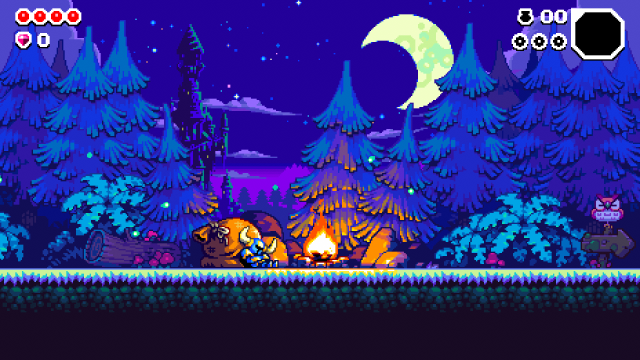
The story in Shovel Knight Dig is quite nice. It's not as deep or affecting as others in the franchise, but it retains the series' signature brand of humor, introduces some new faces, and even expands a bit on the established mythology.
That said, the narrative absolutely takes a backseat to the game's rogue-lite loop and platforming mechanics. Unlike most Shovel Knight adventures, Shovel Knight Dig isn't a side-scrolling action-platformer with unchanging, predictable stages and milestones. Rather it's a vertically-descending rogue-lite with bite-sized levels stitched together at random, in order to make each dungeon run unique. On that front, co-developers Yacht Club Games and Nitrome are entirely successful. Every dive into the subterranean world left behind by Drill Knight feels different, but also makes physical and thematic sense. Moreover, the individual stages are great on their own. The level designers clearly put a lot of work into crafting both a large set of engaging building blocks and a random generation technique that provides a consistent flow between those blocks. It feels both randomized and curated.
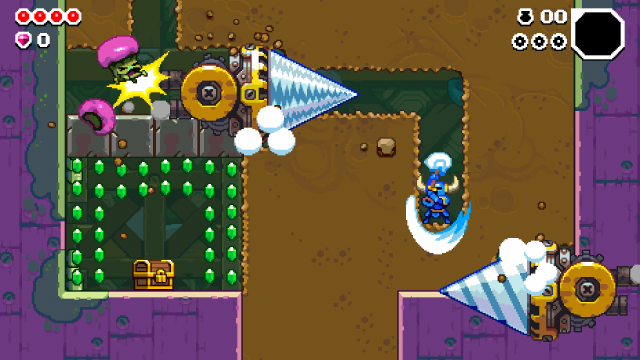
This successful roguish flow would be rather hollow without solid mechanics and controls. Luckily, like many Shovel Knight games before it, Shovel Knight Dig nails the basics. You have only a few commands — jump, sideways slash, downward dig, and deploy sub-weapon — but everything is crisp and responsive. The level of mid-air control between jumps and bounce pads is practically perfect, which is essential when so much of the moment-to-moment gameplay is focused on avoiding traps and enemies, and bouncing your way to prizes, gems, and safe passageways.
Amid all this digging and bouncing, there's a gratifying risk-versus-reward dynamic at play. As you descend into the biomes beneath the surface, you'll run into countless situations where you can opt to pursue gem deposits, treasure chests, and cogs surrounded by monsters or traps — and thus risk a premature death — or continue downward unscathed but largely unprepared for the next challenge. It's probably worthwhile to seek out the three cogs in each area, since they'll unlock a random perk at the bottom. You can also veer off toward shops and NPCs to spend those hard-earned gems on temporary boons, extra hit points, etc.
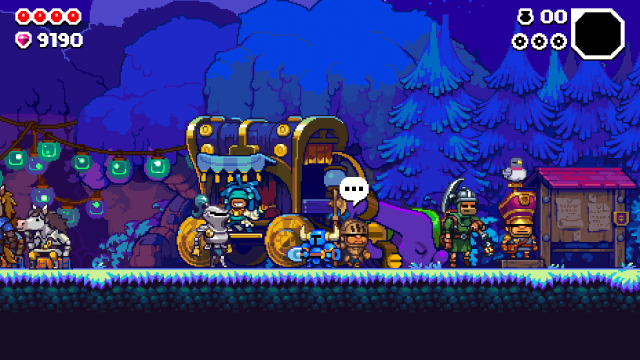
Even if you do fall before the credits roll, you'll retain some of your gems when you revive back on the surface, where you can buy new perks and moves that will afterward show up for purchase in shops underground. It's here where the rogue-lite structure of Shovel Knight Dig starts to show some cracks. Many of the available skills don't really move the needle. They're either useful only in very specific situations, or generally unhelpful. Furthermore, there are very few permanent upgrades, the calling cards of the rogue-lite. As a result, rarely is there a satisfying sensation of progress and momentum. The exceptions to the rule are shortcuts to starting points deeper in the dig zone. These allow you to leap frog the early biomes, and they're absolutely worth the asking price.
The other drawback to Shovel Knight Dig is its running time. I toppled the end boss and watched the credits (and delightful post-credits scene) after two and a half hours. Now, the rogue-lite formula allows almost endless replayability, and Yacht Club Games and Nitrome, in their wisdom, added leaderboards and daily runs to enhance the game's value, but for those who want simply to "beat" the game and move on, Shovel Knight Dig represents a rather low value proposition.
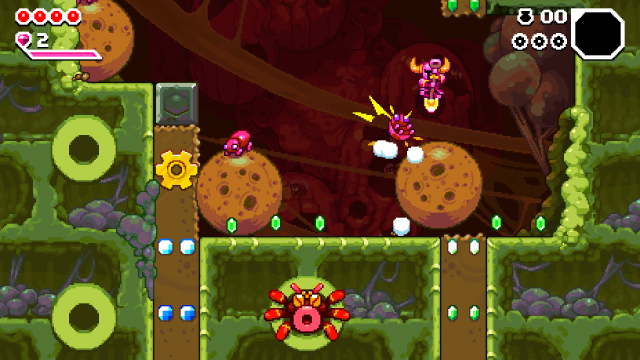
There's nothing low-end about the game's art direction, though. Where previous franchise titles embraced a charming, but limited 8-bit aesthetic, Shovel Knight Dig upgrades to high-color pixel graphics more in line with the artistic styling of SNES or GBA games. It all looks great, thanks to fluid animations and some nifty scaling and parallax effects. It also sounds great, courtesy of Shovel Knight mainstay Jake Kaufman. His chiptune soundtrack benefits from a distinct Sega Genesis sound that matches the 16-bit adventure splendidly. "Thermal Vent" is a highlight.
Shovel Knight Dig isn't the best game in the ever-expanding indie series, but it's a solid addition nonetheless. It delivers a remarkable rogue-lite experience with tight controls, enjoyable bite-sized stages, enticing risk-versus-reward gameplay, and lovely graphics and sound. Only a short running time and an unsatisfactory sense of progression hold it back. It will be interesting to see where, and into which genres, Shovel Knight goes next.









